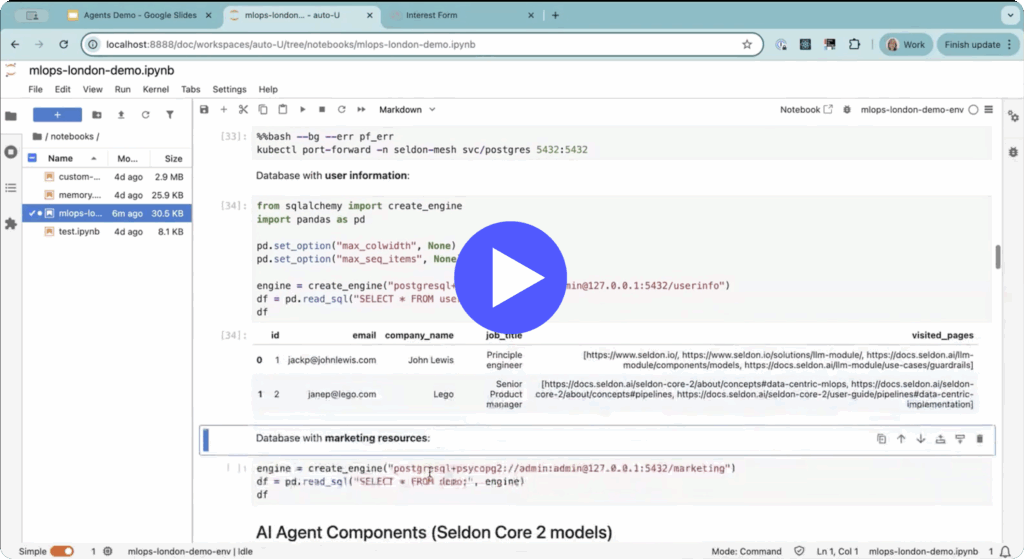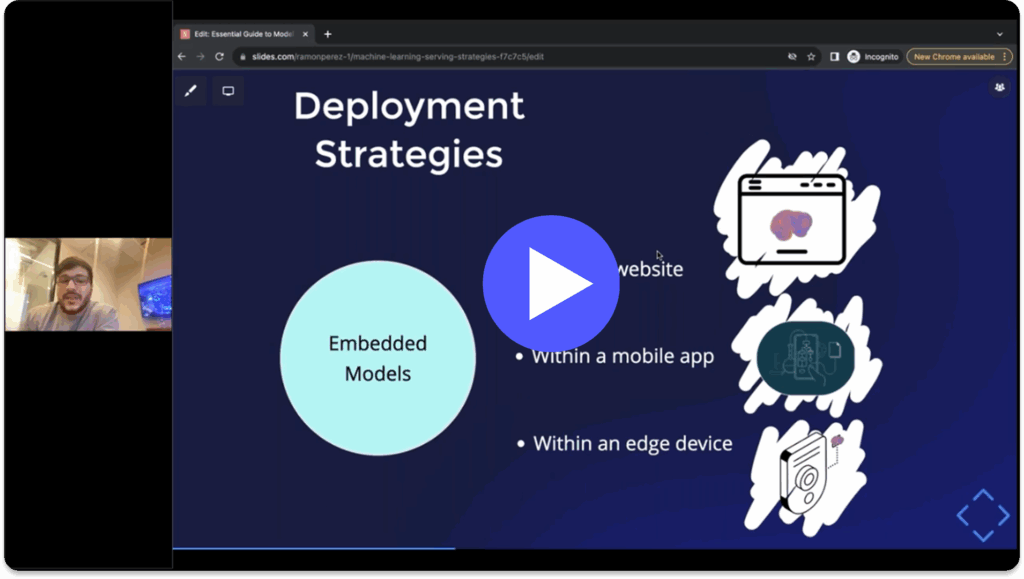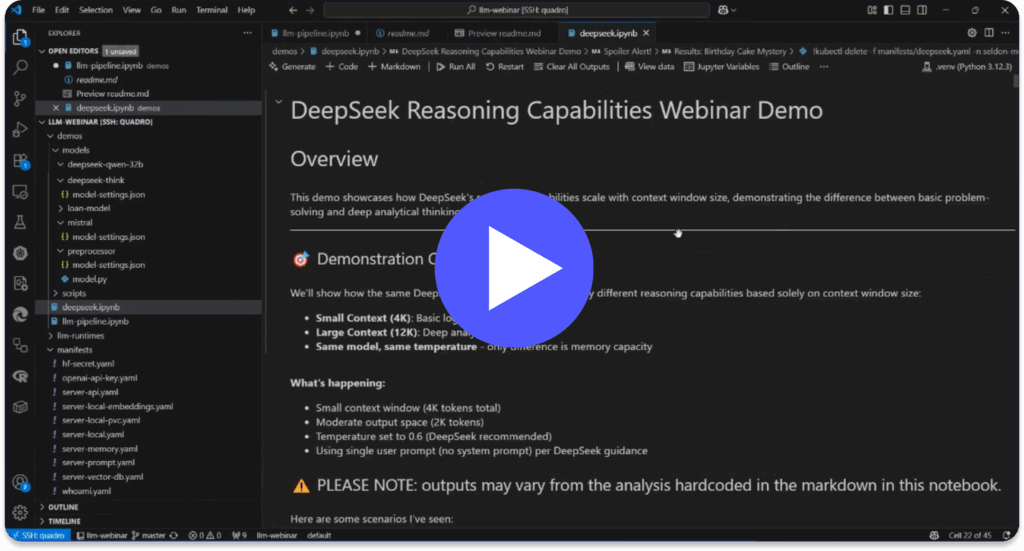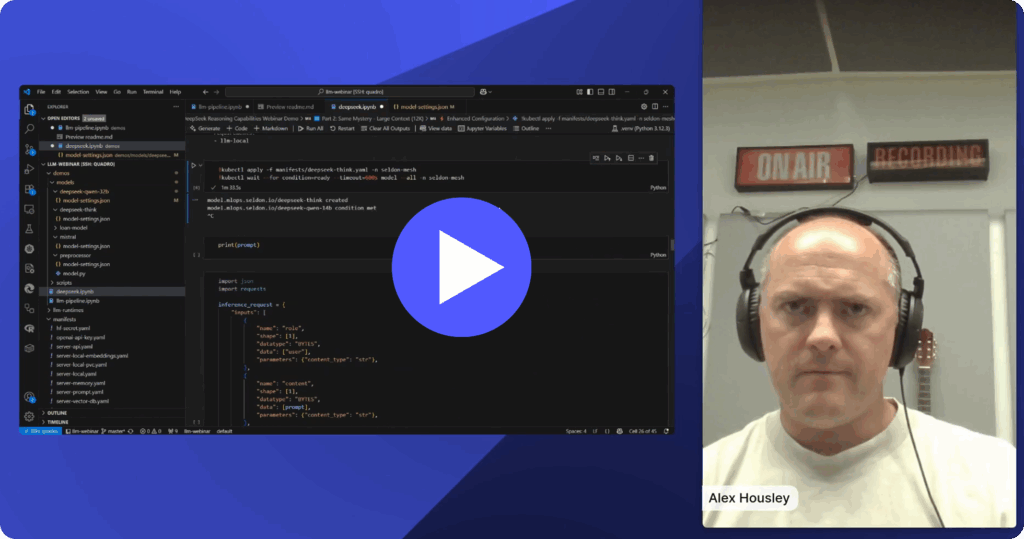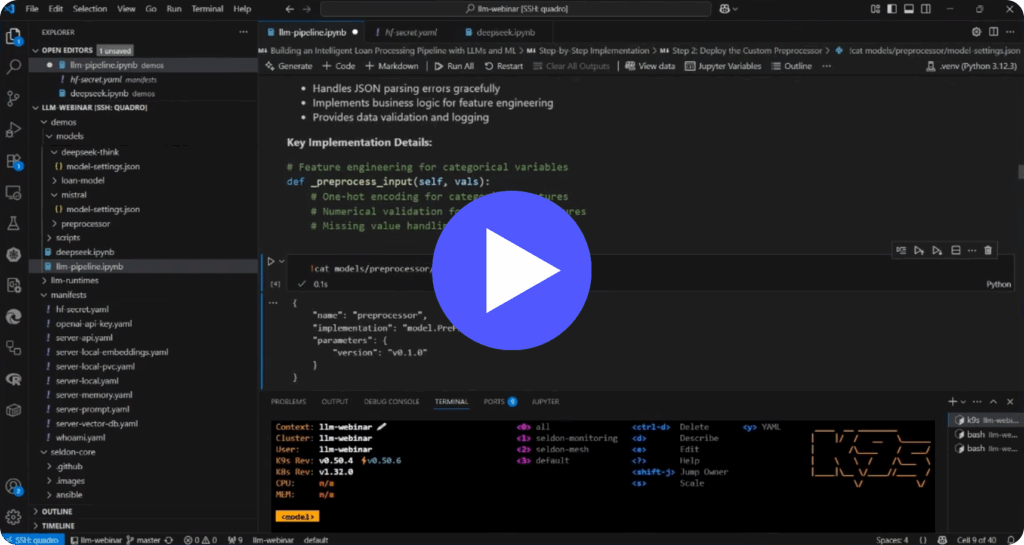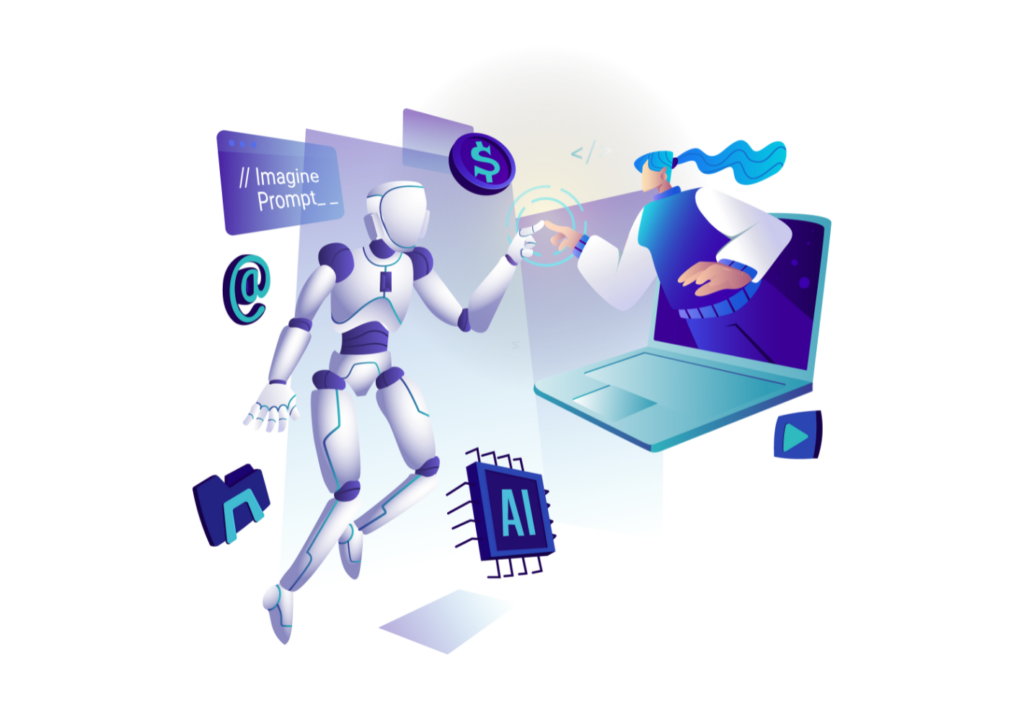Machine learning is already an important part of how modern organization and services function. Whether in social media platforms, healthcare, or finance, machine learning models are deployed in a variety of settings. But the steps needed to train and deploy a model will differ depending on the task at hand and the data that’s available.
Supervised and unsupervised learning are examples of two different types of machine learning model approach. They differ in the way the models are trained and the condition of the training data that’s required. Each approach has different strengths, so the task or problem faced by a supervised vs unsupervised learning model will usually be different.
As machine learning becomes more and more common, it’s important to understand the core differences in supervised vs unsupervised learning. If an organisation is looking to deploy a machine learning model, the choice will be made by understanding the data that’s available and the problem that needs to be solved. This guide explores supervised vs unsupervised machine learning, including the main differences in approach, how they are utilized, and examples of both types. The Seldon Deploy platform supports both kinds of ML. If you are curious and want to see this blog post in action, we recommend getting a free demo from our solutions engineers here.
What is supervised learning?
Supervised machine learning requires labelled input and output data during the training phase of the machine learning model lifecycle. This training data is often labelled by a data scientist in the preparation phase, before being used to train and test the model. Once the model has learned the relationship between the input and output data, it can be used to classify new and unseen datasets and predict outcomes.
The reason it is called supervised machine learning is because at least part of this approach requires human oversight. The vast majority of available data is unlabelled, raw data. Human interaction is generally required to accurately label data ready for supervised learning. Naturally, this can be a resource intensive process, as large arrays of accurately labelled training data is needed.
Supervised machine learning is used to classify unseen data into established categories and forecast trends and future change as a predictive model. A model developed through supervised machine learning will learn to recognise objects and the features that classify them. Predictive models are also often trained with supervised machine learning techniques. By learning patterns between input and output data, supervised machine learning models can predict outcomes from new and unseen data. This could be in forecasting changes in house prices or customer purchase trends.
Supervised machine learning is often used for:
- Classifying different file types such as images, documents, or written words.
- Forecasting future trends and outcomes through learning patterns in training data.
What is unsupervised learning?
Unsupervised machine learning is the training of models on raw and unlabelled training data. It is often used to identify patterns and trends in raw datasets, or to cluster similar data into a specific number of groups. It’s also often an approach used in the early exploratory phase to better understand the datasets.
As the name suggests, unsupervised machine learning is more of a hands-off approach compared to supervised machine learning. A human will set model hyperparameters such as the number of cluster points, but the model will process huge arrays of data effectively and without human oversight. Unsupervised machine learning is therefore suited to answer questions about unseen trends and relationships within data itself. But because of less human oversight, extra consideration should be made for the explainability of unsupervised machine learning.
The vast majority of available data is unlabelled, raw data. By grouping data along similar features or analyzing datasets for underlying patterns, unsupervised learning is a powerful tool used to gain insight from this data. In contrast, supervised machine learning can be resource intensive because of the need for labelled data.
Unsupervised machine learning is mainly used to:
- Cluster datasets on similarities between features or segment data
- Understand relationship between different data point such as automated music recommendations
- Perform initial data analysis
Supervised vs unsupervised learning compared
The main difference between supervised vs unsupervised learning is the need for labelled training data. Supervised machine learning relies on labelled input and output training data, whereas unsupervised learning processes unlabelled or raw data. In supervised machine learning the model learns the relationship between the labelled input and output data. Models are fine-tuned until they can accurately predict the outcomes of unseen data. However, labelled training data will often be resource intensive to create. Unsupervised machine learning on the other hand learns from unlabelled raw training data. An unsupervised model will learn relationships and patterns within this unlabelled dataset, so is often used to discover inherent trends in a given dataset.
So overall, supervised and unsupervised machine learning are different in the approach to training and the data the model learns from. But as a result, they also differ in their final application and specific strengths. Supervised machine learning models are generally used to predict outcomes for unseen data. This could be predicting fluctuations in house prices or understanding the sentiment of a message.
Models are also used to classify unseen data against learned patterns. On the other hand, unsupervised machine learning techniques are generally used to understand patterns and trends within unlabelled data. This could be clustering data due to similarities or differences, or identifying underlying patterns within datasets. Unsupervised machine learning can be used to cluster customer data in marketing campaigns, or to detect anomalies and outliers.
The main differences of supervised vs unsupervised learning include:
- The need for labelled data in supervised machine learning.
- The problem the model is deployed to solve. Supervised machine learning is generally used to classify data or make predictions, whereas unsupervised learning is generally used to understand relationships within datasets.
- Supervised machine learning is much more resource-intensive because of the need for labelled data.
- In unsupervised machine learning it can be more difficult to reach adequate levels of explainability because of less human oversight.
Supervised vs unsupervised learning examples
A main difference between supervised vs unsupervised learning is the problems the final models are deployed to solve. Both types of machine learning model learn from training data, but the strengths of each approach lie in different applications. Supervised machine learning will learn the relationship between input and output through labelled training data, so is used to classify new data using these learned patterns or in predicting outputs.
Unsupervised machine learning on the other hand is useful in finding underlying patterns and relationships within unlabelled, raw data. This makes it particularly useful for exploratory data analysis, segmenting or clustering of datasets, or projects to understand how data features connect to other features for automated recommendation systems.
Examples of supervised machine learning include:
- Classification, identifying input data as part of a learned group.
- Regression, predicting outcomes from continuously changing data.
Examples of unsupervised machine learning include:
- Clustering, grouping together data points with similar data.
- Association, understanding how certain data features connect with other features.
Here we explore the main applications of supervised vs unsupervised learning, including examples of specific algorithms in action today.
Examples of supervised learning classification
A classification problem in machine learning is when a model is used to classify whether data belongs to a known group or object class. Models will assign a class label to the data it processes, which is learned by the algorithm through training on labelled training data. The input and output of the data has been labelled, so the model can understand which features will classify an object or data point with different class labels. The need for labelled data in the training phase means this is a supervised machine learning process.
Examples of how classification models are used include:
- Spam detection as part of an email firewall.
- Identifying and classifying objects in an image file type.
- Speech recognition and facial recognition software.
- Automated classification of documents and writing.
- Analysing the sentiment of written language and messages.
There are different types of classification problems, which are generally different depending on the count of class labels that are applied to the data in a live environment.
The main classification problems include:
- Binary classification
- Multiple class classification
- Multiple label classification
Binary classification
Binary classification is when a model can apply only two class labels. A popular use of a binary classification would be in detecting and filtering junk emails. A model can be trained to label incoming emails as either junk or safe, based on learned patterns of what constitutes a spam email.
Binary classification is commonly performed by algorithms such as:
- Logistic Regression
- Decision Trees
- Naïve Bayes
Multiple class classification
Multiple class classification is when models reference more than the two class labels found in binary classification. Instead, there could be a huge array of possible class labels that could be applied to the object or data. An example would be in facial recognition software, where a model may analyze an image against a huge range of possible class labels to identify the individual.
Multiple class classification is commonly performed by algorithms such as:
- Random Forest
- k-Nearest Neighbors
- Naive Bayes
Multiple label classification
Multiple label classification is when an object or data point may have more than one class label assigned to it by the machine learning model. In this case the model will usually have multiple outputs. An example could be in image classification which may contain multiple objects. A model can be trained to identify, classify and label a range of subjects in one image.
Multiple label classification is commonly performed by algorithms such as:
- Multiple label Gradient Boosting
- Multiple label Random Forests
- Using different classification algorithms for each class label
Examples of supervised learning regression
Another common use of supervised machine learning models is in predictive analytics. Regression is commonly used as the process for a machine learning model to predict continuous outcomes. A supervised machine learning model will learn to identify patterns and relationships within a labelled training dataset. Once the relationship between input data and expected output data is understood, new and unseen data can be processed by the model. Regression is therefore used in predictive machine learning models, which could be used to:
- Forecast stock or trading outcomes and market fluctuations, a key role of machine learning in finance.
- Predict the success of marketing campaigns so organizations can assign and refine resources.
- Forecast changes in market value in sectors like retail or the housing market.
- Predict changes in health trends in a demographic or area.
Common algorithms used in supervised learning regression include:
- Simple Linear Regression
- Decision tree Regression
Simple Linear Regression
Simple Linear Regression is a popular type of regression approach and is used to predict target output from an input variable. A linear connection between the input and target output should be present. Once a model has been trained on the relationship between the input and target output, it can be used to make predictions on new data. Examples might be predicting salary based on age and gender.
Decision Tree Regression
As the name suggests, Decision Tree models take the structure of a tree in which the model incrementally branches. Decision Trees are a popular form of supervised machine learning, and can be used for both regression and classification. The dataset is broken down into incremental subsets, and can be used to understand the correlation between independent variables. The resulting model can then be used to predict output based on new data.
Examples of unsupervised learning clustering
Clustering is the grouping together of data points into a determined number of categories depending on similarities (or differences) between data points. This way raw and unlabelled data can be processed and clustered depending on the patterns within the dataset. Hyperparameters set by the data scientist will usually define the overall count of clusters.
Clustering is a popular use of unsupervised learning models and can be used to understand trends and groupings in raw data. The approach can also highlight data points that sit outside of the groupings, making it an important tool for anomaly detection.
Clustering as an approach can be used to:
- Segment audience or customer data into groups in marketing environments.
- Perform initial exploratory analysis on raw datasets to understand the grouping of data points.
- Detect outliers and anomalies that sit outside of clustered data.
Common approaches to unsupervised learning clustering include:
- K-means clustering
- Gaussian Mixture Models
K-means clustering
K-means clustering is a popular method for clustering data. K represents the count of clusters, set by the data scientist. Clusters are defined by the distance from the centre of each grouping. A higher count of clusters means more granular groupings, and a lower count of clusters means less granular groupings. This method can be used to identify exclusive or overlapping clusters. Exclusive clustering means each data point can belong to only one cluster. Overlapping clustering means data can be within multiple clusters.
Gaussian Mixture Models
Gaussian Mixture Models is an example of an approach to probabilistic clustering, in which data points are grouped based on the probability that they belong to a defined grouping. This approach uses probabilities in the data to map data points to each cluster, in contrast to K-means clustering which uses distance from the centre of the cluster.
Examples of unsupervised learning association rules
Association is the discovery of the relationships between different variables, to understand how data point features connect with other features. This means that the relationship between different data points can be mapped and understood. A key example is in the automated recommendation tools found in e-commerce or news websites. An unsupervised algorithm can be used to analyze customer or user behavior and recommend products to similar users.
A popular method of forming association rules is the Apriori algorithm, which works by identifying trends in a database based on frequency. This approach can be applied to retail product purchases or engagement with film streaming services.
Unsupervised machine learning association rules can be used to:
- Recommend products and services to customers depending on their buying habits.
- Recommend media like songs, films, or TV programs based on user interests or behavior.
- Understand habits and interests of customers to inform e-commerce or marketing campaigns.
Deploy, monitor, and explain your Machine Learning models
Seldon moves machine learning from POC to production to scale, reducing time-to-value so models can get to work up to 85% quicker. In this rapidly changing environment, Seldon can give you the edge you need to supercharge your performance.
With Seldon Enterprise Platform, your business can efficiently manage and monitor machine learning, minimize risk, and understand how machine learning models impact decisions and business processes. Meaning you know your team has done its due diligence in creating a more equitable system while boosting performance.
Deploy machine learning in your organizations effectively and efficiently. Talk to our team about how you can have a free trial of our machine learning solutions today.


